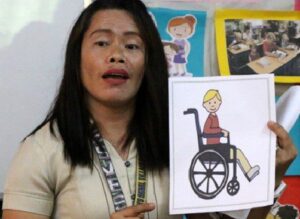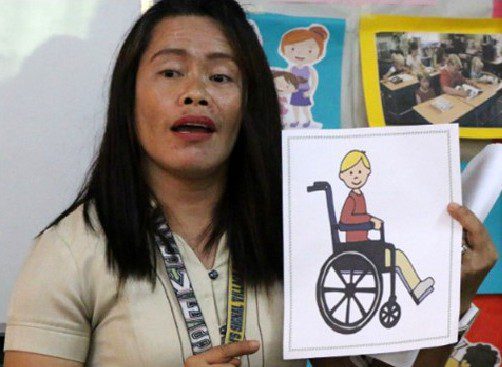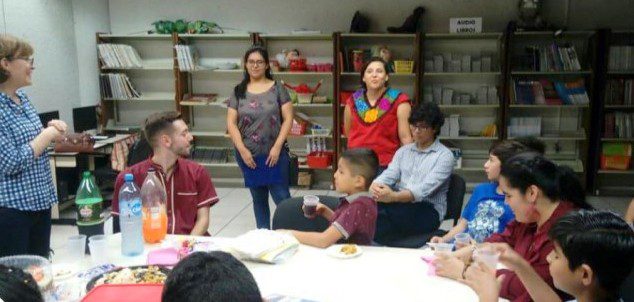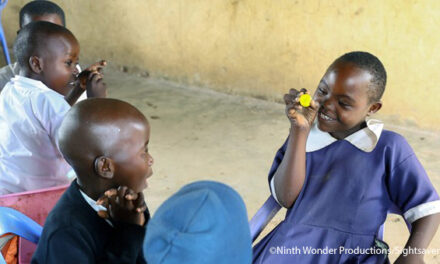This blog was written by Phil Dexter, previously Senior Consultant, Education at the British Council and now a freelance education consultant and highlights some key activities taking place around the world to address inclusion related to special educational needs and disability. Further information on each programme can be found in the British Council publication: Creating an Inclusive School Environment, edited by Susan Douglas, 2019. Phil Dexter is the sub-editor of the SEND section.
 What is the global context in special educational needs and disability?
What is the global context in special educational needs and disability?
April 2019 was the 25th anniversary of the Salamanca Statement on Special Educational Needs Education published by UNESCO and signed by 92 countries. The Salamanca Statement was recognised as a significant milestone in moving towards more inclusive education, providing a framework for how to make progress in terms of policy and practice. The statement advocated that mainstream schools which adopt an inclusive approach are ‘the most effective means of combatting discriminating attitudes, building an inclusive society and achieving education for all’. Inclusive education, the idea of all children being educated together in a unified educational system regardless of any differences between them, was originally concerned with the inclusion of learners with disabilities, many of whom had historically been excluded from mainstream schools. It is widely understood and acknowledged that progress has been made since 1994, but many children remain excluded – whether directly out of school, dropping out of school or excluding for meaningful learning even if they are in school.
What is the British Council’s approach to special educational needs and disability?
The British Council takes a broad approach to special educational needs and disability (SEND) focused on the recognition of learning needs rather than ‘special needs’. This means focusing on communication and interaction, cognition and learning, social, emotional and mental health, sensory and/or physical needs and other societal factors that have an impact on learning and which may create barriers to learning and a gap between performance and potential. The British Council approach is based on a ‘one A and three Es’ approach:
- A for access – ensuring that young people are in school or accessing education
- The Es are:
- Engagement (ensuring that the quality of the learning experience is valuable and relevant;
- Enablement (ensuring that schools and teachers have appropriate skills to implement inclusive practices); and
- Empowerment (that schools and teachers have the authority to apply flexible approaches in curriculum, syllabus and teaching approaches).
It is also believed that inclusive practices will successfully happen when policy, practices and (educational) culture are in alignment.
What is the focus on SEND in the Creating an Inclusive School Environment publication?
In the four chapters in the SEND section, the issues outlined above are explored with a specific focus on continuing professional development (CPD) and whole-school approaches aimed at creating more inclusive learning environments in South Africa, Mexico and East Asia, and through a transglobal project involving Russia, Macedonia, India and West Africa.
In ‘Teaching for All: mainstreaming inclusive education in South Africa’, Caroline Grant and Joanne Newton describe the multidimensional, evidence-informed approach that will make a significant contribution to providing equitable and inclusive quality education in South Africa. Despite great progress in addressing the huge inequalities of the apartheid regime and extensive action on policy, the benefits of approaches to inclusive education have not matched expectations, with attendance issues and underachievement across the primary and secondary systems. This innovative project, based on extensive research and collaborative approaches with partners, is aimed at embedding inclusive education in pre-service initial teacher-training programmes across university courses in South Africa. This is described in detail together with further development within existing in-service programmes. This is not without challenges in terms of working with partners, development of materials, impact on approaches to initial and CPD for teachers, and changing concepts of school experience. The Teaching for All resource materials are available as Open Educational Resources here.
 In ‘Successful inclusive education starts with teachers: What have we learned? A multi-country case study’, Els Heijnen-Maathuis looks at a multi-country programme across Indonesia, Bangladesh, Myanmar (Burma), the Philippines and Cambodia. This programme is based on an approach where all children, regardless of their differences, are educated together so everyone can benefit. At the heart of this is an inter-sectional understanding that children may not be able to fully benefit from school if they live in poverty, have a disability, speak a different language or are otherwise marginalised. Yet teachers who have been effectively trained and continue to receive professional support can make a huge difference in the educational outcomes of children from disadvantaged backgrounds. This study showcases how teachers can become more inclusive practitioners. The focus is on understanding and responding to the individual (rather than ‘special’) needs of learners and creating quality learning environments that go beyond just academic achievement. Heijnen-Maathuis explains how the project has encouraged teachers to reflect on both their classroom practice and its impact on different learners, as well as their willingness to adjust their approaches to the different learning needs of students.
In ‘Successful inclusive education starts with teachers: What have we learned? A multi-country case study’, Els Heijnen-Maathuis looks at a multi-country programme across Indonesia, Bangladesh, Myanmar (Burma), the Philippines and Cambodia. This programme is based on an approach where all children, regardless of their differences, are educated together so everyone can benefit. At the heart of this is an inter-sectional understanding that children may not be able to fully benefit from school if they live in poverty, have a disability, speak a different language or are otherwise marginalised. Yet teachers who have been effectively trained and continue to receive professional support can make a huge difference in the educational outcomes of children from disadvantaged backgrounds. This study showcases how teachers can become more inclusive practitioners. The focus is on understanding and responding to the individual (rather than ‘special’) needs of learners and creating quality learning environments that go beyond just academic achievement. Heijnen-Maathuis explains how the project has encouraged teachers to reflect on both their classroom practice and its impact on different learners, as well as their willingness to adjust their approaches to the different learning needs of students.
In ‘Teaching English as a second language to the visually impaired in disadvantaged contexts: a case study from Chiapas, Mexico’, Ana María Elisa Díaz de la Garza, María de Lourdes Gutiérrez Aceves and María Eugenia Serrano Vila discuss their research conducted at a public university in the State of Chiapas, Mexico. The specific focus is on supporting and including learners with visual impairment although the context is much broader, with a lack of services and resources and negative attitudes to inclusive practices. The study discusses the importance of preparing teachers to address the needs of all students in the classroom – including students with disabilities – through teacher education based on effective inclusive pedagogy. Their findings illustrate that empowering teachers to take control of their own development can enrich teacher learning particularly in cases where teachers collaborate to overcome common challenges.
In ‘The theatre of the classroom’, David Crabtree discusses his experience supporting teachers in their efforts to implement more inclusive learning in Macedonia, India, West Africa and Russia. The case study aims to identify key steps that teachers, school managers and policymakers need to take to create more inclusive classrooms and some of the challenges they may face in doing this. The concept of the theatre of the classroom shows how teaching and learning are enacted in a structured environment with everyone having a part to play. The case study explores the notion of this ‘script writing’, the actions of the ‘players’ and the importance of being inclusive so everyone can realise their potential.
Further information on each programme can be found in the British Council publication Creating an inclusive school environment, edited by Susan Douglas, 2019.
This blog is the third in a series based on the new British Council book. This first can be found here: Creating an inclusive school environment: displaced populations. And second here: Creating an inclusive school environment: minority ethnic groups in the classroom.






